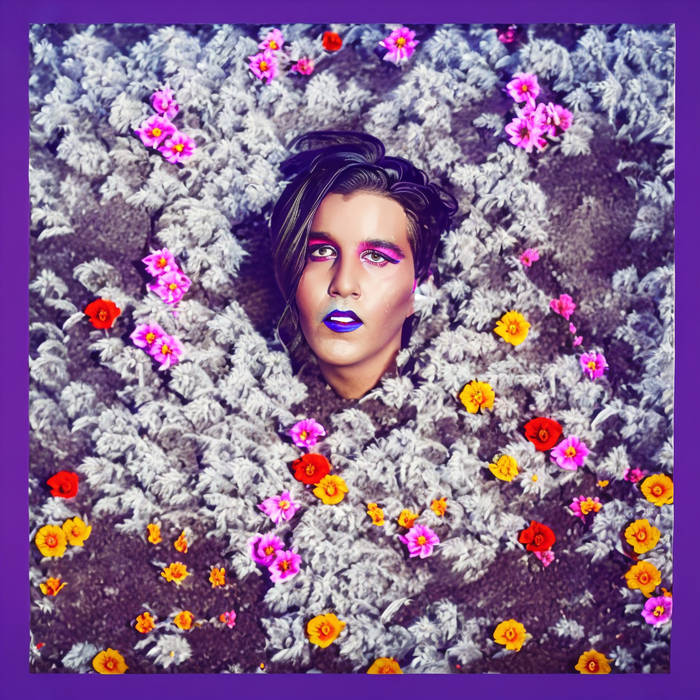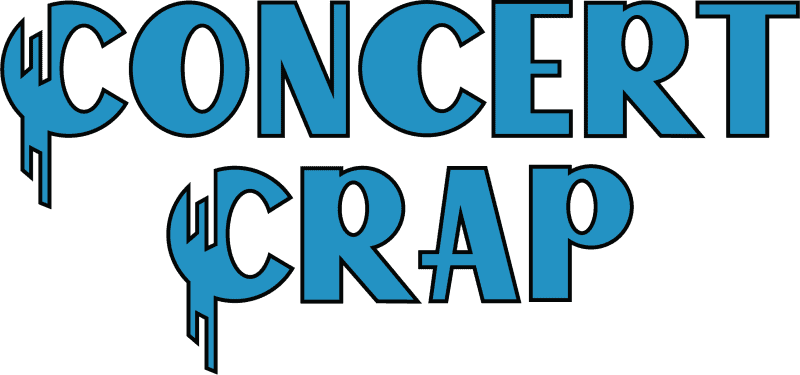
In this interview we step into the kaleidoscopic universe of Lady Charles, the Ottawa-based singer, songwriter, and shape-shifting art-rocker behind the immersive album “Manic Pixie Dream World.”
Blending folk, indie-rock, electronica, punk, glam, funk, and pop, Lady Charles embodies a musical journey that defies convention and turns heads. With their latest single, “Child of the Night,” a testament to their evolution, they craft intricate, genre-defying soundscapes.
Check out our interview below!
Your album, “Manic Pixie Dream World,” is described as an immersive music lifestyle experience. Could you share more about the concept behind this? It’s such a unique approach!
Manic Pixie Dream World is basically my attempt at creating a world of music to escape into. I wanted the songs to be full of details and rich sonic textures, to offer an alternative to the gloomy, lonely world of pandemic isolation. I worked on it every day through lockdowns, and it really became its own world – and I leaned into that, trying to put so much of myself into it that it became a sonic dreamscape of my life – something that could stand taller than just a collection of songs.
Your music has been described as a fusion of different genres. Was that a conscious decision or did it just happen?
It can be a bit of both – I love all sorts of genres and the more you get into them the less they start to feel discrete. Most of what I write I try not to keep any particular genre in mind – I just do what I feel works with my ideas which tends to involve elements of rock, electronic, soul, hip-hop etc.
But sometimes I have a very specific vision of genre, like for Apocalypse Girls, I wanted to use the dizzying complexity of prog and the immediacy of disco and dance to build a very bewildering, techno-futuristic piece that has an edge and sense of menace. So it’s basically a 17/8 rendition of a disco beat with an electronica synth-bassline and I love how the contrast between the very simple danceable rhythm and very awkward, mathy count create a sort of a dance-punk energy that you wouldn’t otherwise hear in a song with such an odd rhythmic structure.
That’s a lot of what makes it a ‘dreamworld’ sort of album – the desire to pull all these very out-there elements together and really have fun pushing the boundaries of composing/arranging. Where some people really love playing an instrument I love creating these self-contained little worlds of sound, and I tried to make a few musical dreams reality.
I can see some of your influences really clearly in your music and aesthetic from David Bowie to MGMT but then there are some like U2 or Kate Bush that are a bit more mysterious, at least on the surface. Tell me about how all these artists influence your music.
Bowie and U2 are both artists I grew up listening to so they’re really foundational influences, but the Bowie influence is probably more obvious because those were a lot of the first songs I really learned the ins and outs of.
For a band like U2, I always loved the way they transfigured post-punk music into something that can touch so many people, something so mainstream and yet you can still hear that era of Joy Division and Wire peeking through.
One of the first songs of theirs I liked as a little kid was Mysterious Ways, from Achtung Baby. My aunt knew I was thinking into the show Mighty Machines and told me the guitar noise in the intro sounded like a construction site. I thought it was so cool to hear this song that sounded like industrial noise yet was so catchy and anthemic.
A lot of people don’t like bands like U2 or Red Hot Chili Peppers specifically because they took a fairly underground sound and made it mainstream but I love both those bands for taking post punk and no wave and using them as vehicles for something so ambitious and powerful. I would far rather listen to a band who are honest about their ambitions being huge than a band who are self-consciously afraid of seeming too mainstream – rock is about being larger than life.
Kate Bush is on another plane. I am not even sure what to say, she touches at the very heart of human experience while engaging in some absolutely over the top, bewitching, and otherworldly theatrically and movement. Like Bowie she is a pure artist who happened to fit best into music, but every aspect of what she does is an extension of her art. Tarkovsky is like that with film perhaps, Frida Kahlo with visual art.
Your latest single, “Child of the Night” is said to represent a significant evolution in your musical journey. Was this a conscious decision?
Sort of – the song was actually written awhile before I started Lady Charles but when I was commissioned to work on Oh Boy! I realized it would fit really well with the younger character’s big solo. The soundtrack is supposed to be disco, but there’s an element of generational tension in the play, so I brought in a lot of the indie music I listened to when I was younger. So the sound of the song is a real synthesis of two generations of disco.
Do you believe as an artist you always need to be growing and evolving?
I think that as an artist you have to follow your muse and do what brings you joy in the moment. If you are true to that, I think you will always be growing and evolving, even if you make the conscious choice to revisit your past.
How has releasing this latest track challenged you and how does it define where your music is headed next?
Doing something with elements of disco is always a challenge as a multi-instrumentalist because it requires a very precise, very lively sense of rhythm. Funk players blow my mind. As someone who is more into playing instruments to make my ideas come to life than for the technical side, it always pushes me to improve when I end up in the funk realm, because players like Carlos Alomar, Nile Rodgers, Prince, John Frusciante deserve better than mediocrity from someone they inspire.
Your approach to songwriting seems to defy traditional pop music structures. Were you nervous doing that at all?
Popular music always takes on the form of whatever listening format is popular. Nowadays with streaming it’s common advice to start your song with the hook because you want a listener to get interested fast so they don’t skip.
Personally I love popular music and think one of the most rewarding things to write is a catchy pop tune. But I also think that if you let the format of the day guide you or depend on formulas you risk ceding ground from your own artistic vision and killing part of what makes you unique. So I really do try to write music that is catchy on my own terms, and don’t like to worry too much about how it will land with other people. If it excites me it will excite others, if it’s formulaic but doesn’t excite me how can I expect it to stand out from any of the millions of songs using those exact formulas?
It did feel a bit nerve wracking with Child of the Night because that one is more of a progressive structure and really has no traditional verses, and it starts with a fairly long repetitive A section before hitting an instrumental verse then the chorus. But it felt right, so I just hoped that people would make it to the chorus!
I think the important thing is that as a writer you understand why these formulas exist and what they are, not that you actually follow them. I always appreciated pop songs that worked in unusual ways and so it’s very rewarding for me to experiment a bit and find different ways to express myself that still resonate.
You mentioned working on music for the play “Oh Boy!” I love that you’re exploring creativity in so many different ways even outside traditionally released music! Could you share how this project differs from your solo work?
Thanks!
The big difference in composing a soundtrack is that you’re writing it as a piece of something bigger. You have to fit it with the director’s vision and capture the emotional authenticity of someone else’s writing.
It sounds like a limitation but I love it because it pushes you into places you wouldn’t necessarily go. Nat Habib, the director, wanted a very 70s disco infused sound and it was really fun working with the vocabulary of disco and using string synths, live drums, funk guitars, falsetto voice, wah wah clavinet etc. Child of the Night is actually the least disco-y track, I am excited to drop the whole EP which has some very 70s vibes.
Last, but not least, your branding is ON POINT. For artists who struggle to tell their story, find their audience, and show that all visually, what advice do you have?
Be honest with yourself even if it’s scary. Being Lady Charles is a bit of a nightmare at times but it’s not scary because I know it’s all a dream, my dream. You can’t hold back parts of yourself out of fear of hate because the sort of people who would hate your true self aren’t your audience. Be you even if it’s silly or ridiculous or controversial, people will connect with that authenticity. And remember that authenticity isn’t just going out in jeans and a shirt and playing your songs, it’s putting on the show you would want to see, even if that’s performing ballet in the nude or something while you sing.
Thanks for chatting with me! Is there anything else you’d like to share?
Thanks so much!
Follow Lady Charles:
Instagram: https://www.instagram.com/ladycharlesmusic
TikTok: https://www.tiktok.com/@ladycharles
YouTube: https://www.youtube.com/@ladycharlesmusic/featured
Comment below.
LEAVE A VOICEMAIL OR TEXT:
909-296-1533
FOLLOW US!
Instagram l Facebook l Youtube l Twitter
LISTEN TO US!
Spotify l Anchor l Google Podcasts
SUPPORT US!
Patreon l Venmo l Cash App l Paypal
AND ‘SUBSCRIBE’ to our email newsletter to know the very moment a new post is published!
#ConcertCrap


Leave a Reply